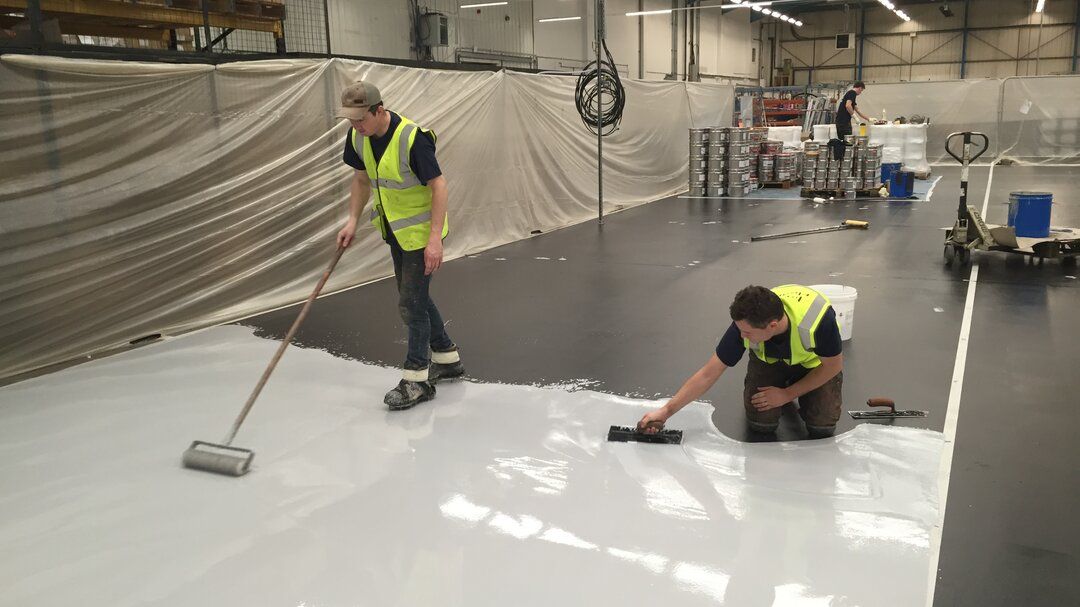1. Laminate Flooring And Its Care Needs
Laminate flooring is a popular choice for homes because of its sleek appearance and affordability. It looks like hardwood but comes at a fraction of the cost. People love it for its easy maintenance and stylish finish. But, like all types of flooring, proper cleaning methods are key to keeping it in great shape.
Using the wrong cleaning tools can damage your laminate floors, which is why understanding how to clean them is so important. This blog will discuss whether you can use a steam cleaner on laminate floors and give safer cleaning options.
2. Laminate Floors
Laminate floors are made up of several layers. The top layer is a clear protective coat that gives the floor its shine and protects it from scratches. Underneath that is a decorative layer that mimics wood or tile. The next layer is a fiberboard core made from wood fibers that are pressed together. This core is what makes laminate flooring sturdy, but it also makes it sensitive to moisture.
Because of this fiberboard layer, water can cause major damage to laminate flooring. If the floors absorb too much moisture, they can warp, swell, or even crack. This is why it’s important to be careful about how much water you use when cleaning laminate floors.
3. How Steam Cleaners Work
Steam cleaners are popular because they use hot water vapor to clean surfaces. They work by heating water until it turns into steam, which is then pushed out through a cleaning pad or nozzle. The heat from the steam helps break down dirt and stains without the need for harsh chemicals. This is great for many surfaces like tile or stone, where water doesn’t easily soak in. However, laminate floors are a different story.
The main appeal of steam cleaners is their ability to sanitize and deep-clean surfaces using only water. But this feature, which is so beneficial for many materials, is what makes steam cleaners risky for laminate floors.
4. Why Steam Cleaners Are Not Recommended for Laminate Floors
Steam cleaners can cause serious problems for laminate floors. The high moisture levels from the steam can penetrate the seams of the laminate planks and get to the fiberboard core. Because this core is water-sensitive, it may start to swell, warp, or even buckle. Over time, using a steam cleaner can ruin the floor, causing uneven surfaces and gaps between the boards.
Additionally, the heat from the steam can also cause the top protective layer to peel or bubble. This not only affects the look of your floor but also makes it more vulnerable to damage from foot traffic or furniture. Laminate floors can’t handle much moisture. Steam cleaners can add too much water.
5. Safer Alternatives To Clean Laminate Floors
If you want to keep your laminate floors clean and shiny without causing damage, there are safer options than steam cleaning. Here are some effective methods that won’t harm your floors:
- Dry Mopping: A microfiber mop is a great way to pick up dust and dirt without scratching the floor. This type of mop doesn’t need water, which makes it safe for laminate floors.
- Damp Cloth: For spots or sticky areas, you can use a damp cloth. Make sure the cloth is only lightly damp, not soaking wet. Wipe the area, and then immediately dry it with another cloth to prevent water from sitting on the surface.
- Laminate-Specific Cleaners: There are cleaners made specifically for laminate floors. These products are designed to clean without leaving streaks or causing water damage. Always follow the directions on the bottle and use a soft mop or cloth to apply the cleaner.
- Vacuuming: A vacuum without a beater bar can help keep your floors free of dust and dirt. Just make sure to use a soft attachment that won’t scratch the surface.
To Maintain Your Laminate Floors, It’s Also Important To Take Preventive Steps:
- Place floor mats at entrances to trap dirt and moisture before it reaches the laminate.
- Use felt pads under furniture legs to prevent scratches.
- Clean up spills immediately to avoid water damage.
These simple practices will keep your floors looking new for years to come without the risk of damage from steam cleaners.
6. What To Do If Your Laminate Floor Gets Wet
Despite your best efforts, accidents happen. If your laminate floor gets wet, it’s important to act quickly to minimize damage.
- Wipe Up Spills Immediately: Use a dry towel or mop to soak up any standing water. Don’t let water sit on the surface, as this can cause the boards to swell.
- Dry the Area: After wiping up the water, dry the area thoroughly. You can use fans to help speed up the drying process. Avoid using heat, as this can cause further damage.
- Watch for Signs of Damage: If the floor starts to swell or warp, you may need to replace the affected planks. Unfortunately, once water has caused damage, there’s little you can do to fix it other than replace the damaged boards.
- Call a Professional: If the water damage is extensive, it may be best to call a professional for help. They can assess the damage and recommend the best course of action.
For larger spills or more serious issues, you might want to investigate floor care services Maine. They specialize in handling water damage and can restore your floors to their original condition.
7. Protect Your Laminate Floors With Proper Care
In conclusion, while steam cleaners are a great tool for cleaning many types of surfaces, they are not suitable for laminating floors. The high moisture levels and heat from the steam can cause serious damage, including warping, swelling, and bubbling. To protect your laminate flooring, use safer cleaning methods. Dry mop, use a damp cloth, or use laminate-specific cleaners.
For the best results, hire experts for floor polishing Maine. It will keep your floors in great shape. They can provide the right care and maintenance to extend the life of your laminate floors, helping you avoid costly repairs down the road. Always remember, proper care will keep your laminate flooring looking beautiful and lasting for many years.




